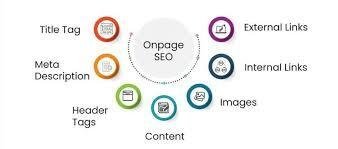A Deep Dive into On-Page SEO: Essential Strategies for Success
In today’s digital landscape, On-Page SEO is a fundamental aspect of any effective search engine optimization strategy. By concentrating on optimizing individual pages of your website, you can significantly boost your site’s visibility in search engine results and enhance the overall user experience.
A Deep Dive into: Essential Strategies for Success
In today’s digital landscape, On-Page SEO is a fundamental aspect of any effective search engine optimization strategy. By concentrating on optimizing individual pages of your website, you can significantly boost your site’s visibility in search engine results and enhance the overall user experience. In this blog post, we will explore what On-Page SEO entails, its importance, and the best practices to adopt for optimal results.
What is On-Page SEO?
On-Page SEO refers to the various techniques used to optimize individual web pages to improve their rankings in search engine results and attract more relevant traffic. This optimization includes both the content and the HTML source code of a page, distinguishing it from Off-Page SEO, which involves external factors like backlinks and social media.
Why is On-Page SEO Important?
On-Page SEO is crucial for several reasons:
-
Enhanced User Experience: By optimizing your website’s content and layout, you make it easier for users to find the information they seek. A positive user experience can lead to lower bounce rates and increased time spent on the site, both of which are favorable signals for search engines.
-
Improved Search Engine Rankings: Proper use of keywords, meta tags, and other elements helps search engines understand your content's relevance to user queries. Greater relevance can lead to better SERP rankings.
-
Increased Conversion Rates: Well-optimized pages attract the right audience, leading to higher conversion rates. A well-structured page encourages visitors to take actions such as making purchases, signing up for newsletters, or requesting information.
Key Elements of On-Page SEO

1. Keyword Research
The foundation of effective On-Page SEO is thorough keyword research. Identify the keywords and phrases your target audience is searching for. Tools like Google Keyword Planner and Ahrefs can help you find relevant keywords with good search volume and manageable competition.
2. Title Tags
The title tag is one of the most critical on-page elements. It should be concise, engaging, and include your primary keyword. Aim for a length of 50-60 characters to ensure it displays correctly in search results. A compelling title tag can significantly impact your click-through rates.
3. Meta Descriptions
Although not a direct ranking factor, a well-crafted meta description can enhance your click-through rate. This brief summary (around 150-160 characters) should include relevant keywords and provide a clear overview of the page’s content. Make it enticing to encourage users to click on your link.
4. Headers (H1, H2, H3)
Using header tags effectively organizes your content and helps search engines understand its structure. The H1 tag is typically reserved for the main title, while H2 and H3 tags are used for subheadings. Incorporate relevant keywords naturally within these headers.
5. High-Quality Content
Content is paramount in SEO. Create high-quality, engaging, and informative content that meets the needs of your audience. Use your target keywords naturally throughout the text, avoiding keyword stuffing. Aim for a word count of at least 1,000 words for comprehensive topics.
6. URL Structure
A clean and descriptive URL structure enhances user experience and can improve search rankings. Include relevant keywords in your URLs and keep them short and straightforward. For example, instead of "www.example.com/p=12345," use "www.example.com/best-running-shoes."
7. Image Optimization
Images are essential for user engagement but can impact page loading speed if not optimized. Use descriptive file names and alt text for images, incorporating relevant keywords. This practice not only helps with SEO but also improves accessibility for users with disabilities.
8. Internal Linking
Internal links connect your pages, helping users navigate your site and allowing search engines to crawl your content more effectively. Use descriptive anchor text and link to relevant pages within your website to keep visitors engaged longer.
9. Mobile Optimization
With a significant amount of web traffic coming from mobile devices, ensuring your site is mobile-friendly is crucial. A responsive design, fast loading times, and easy navigation on mobile devices contribute to a positive user experience and better rankings.
10. Page Speed
Page speed is a critical ranking factor. A slow-loading website can lead to higher bounce rates and lower user satisfaction. Use tools like Google PageSpeed Insights to analyze and improve your site’s loading speed.
Conclusion
On-Page SEO is a vital component of any successful SEO strategy. By focusing on optimizing individual pages, you can enhance user experience, improve search engine rankings, and increase conversion rates. Implementing the best practices outlined in this post will help you build a stronger online presence, ensuring that your website effectively meets the needs of both users and search engines.
What's Your Reaction?
















